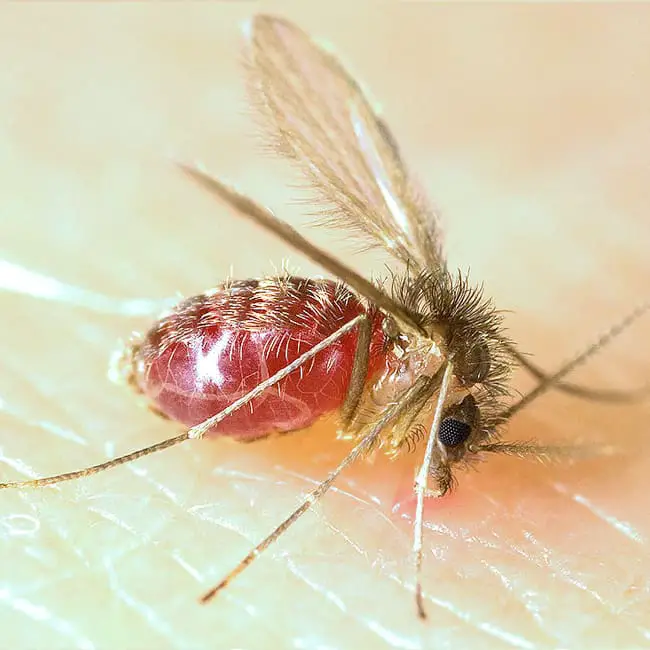There are numerous diseases which are caused by insects among us. One might get confused between these insects. Two insects named mosquitoes and sandflies share a vast difference among them.
However, both of these insects are non-venomous but can lead to the birth of various deadly diseases in a human being.
Key Takeaways
- Mosquitoes are larger, flying insects known for their biting and blood-sucking behavior, and can transmit diseases like malaria and dengue.
- Sandflies are smaller insects that bite and suck blood and can spread diseases like leishmaniasis and sandfly fever.
- Both insects pose health risks, making personal protection and environmental control crucial in affected areas.
Mosquito vs Sandfly
Mosquitoes are small insects with a long, slender body and wings that are narrow and pointed. They are known to transmit malaria, dengue fever, and Zika virus. Sandflies are smaller insects, with a rounded body and wings that are broader and more rounded. they can transmit leishmaniasis.

Mosquitos belong to a family of about 3500 species of small flies. This family of species is known as Culicidae.
Culicidae, the word is derived from the Latin word Culex which means ‘gnat’. The word mosquito is made up of Spanish and Portuguese which means ‘little fly.
Sandfly is a term that can be used to refer to any species of biting and flying insect or fly that sucks blood and is founded in sandy areas. Sandfly is a colloquial name.
The wings of sandflies appear to be straight and hairy. Sandflies are found in wetlands and beaches.
Comparison Table
| Parameters of Comparison | Mosquito | Sandfly |
|---|---|---|
| Preferable time for biting | Mosquitos tend to bite on humans in the evening and at nighttime. | Sandflies bite humans at dusk and dawn. |
| Disease caused | The diseases caused by mosquito bites are the Zika virus, West Nile virus, Chikungunya virus, dengue, and malaria. | The diseases caused by sandflies bites are Carrion’s disease, Papadakis fever, filarial worms. |
| Size | Mosquitoes are 4-5 mm long. | Sandflies are about 2.5 mm long. |
| Color | Mosquitoes are black. | Sandflies are yellowish-brown in color. |
| Preferable spot for biting | Musquitos can bite anywhere in order to feed on human blood. | The spots which sandflies prefer to bite on are the face, hands, and scalp. |
What is Mosquito?
Mosquitos have gracefully thin divided bodies, 3 pairs of long legs, longer mouthparts, a pair of wings, and a pair of halters. A mosquito has four-stage in the cycle of its life, these four stages are egg, larva, pupa, and adult.
The male mosquitos majorly feed on nectar and other juices secreted by plants.
However, sometimes female mosquitos also tend to do the same. To mature the eggs of female mosquitos, the female mosquitos feed on humans’ or animals’ blood meals which provides them sufficient protein.
It is believed that most of the mosquitos are allure towards the hosts due to the moisture, heat, and movement of the body present on their body.
Unique from various other insects, mosquitos tend to swim freely and actively in their pupal stage, which is known as tumblers.
The means of tubes present on the thorax are used by pupae for breathing.
After appearing from their cases of pupal, the adult mosquitos’ mate. The period of the life cycle depends on the species.
Mosquitos are well known for spreading various diseases like malaria, dengue, yellow fever, and Zika fever. The female mosquitos tend to lay their eggs on the water surface and hatch them into aquatic larvae.
In most species, larvae tend to feed on organic debris and algae. Various species of mosquitos have their preferences.

What is Sandfly?
Sandflies can also be referred to as horse flies or also known as greenheads, in the United States. Sandfly belongs to a family of species called Tabanid or to Ceratopogonidae.
Apart from the United States, sandflies may be referred to belong to a subfamily called Phlebotomine under Psychoid.
Biting-midges are referred to as sandflies. Among various species of the sandfly, only the female sandflies are majorly accountable for sucking blood from their hosts such as mammals, birds, or reptiles.
When female sandflies suck blood from the body of their hosts, the blood provides them with sufficient protein which is important for the reproduction of eggs.
This makes a sandfly an anautogenous reproducer. Sandflies that belong to a subfamily called Phlebotomine are known to be primary vectors of leishmaniasis and Papadakis fever.
Both diseases are referred to be sandflies fever. Leishmaniasis is majorly spread in Africa, Asia, and Europe by sandflies that belong to Phlebotomus.
The disease is spread in America by sandflies which are members of Lutzomyia. The eggs which are laid by the sandflies measure about 0.4 to 0.5 mm in length and the hatching of eggs takes place in about one to two weeks.
The head of sandflies has a pair of extended and hairy antennae. Palpi and proboscis are a pair of important black eyes present in the sandflies.

Main Differences Between Mosquito and Sandfly
- Mosquitoes tend to suck blood from the body of their hosts while sandflies do not suck blood from the body of their hosts.
- Mosquitoes are a bit large as compared to sandflies.
- Mosquitoes lay around 100 to 260 eggs while sandflies lay about 40 to 60 eggs.
- Mosquitoes have the capability of flying around 3 to 4 km whereas sandflies can fly to only about 200 yards.
- The life span of mosquitos is around 2 to 3 weeks; however, the life span of sandflies is around 2 weeks.

